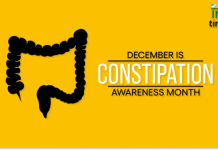
Every year on October 15, the world comes together to celebrate Global Handwashing Day, an important observance that underscores the value of hand hygiene in preventing diseases and saving lives. The day highlights the crucial role that handwashing with soap plays in promoting health and well-being, especially among children. It serves as a reminder that clean hands can break the cycle of infection, reduce absenteeism in schools, and foster healthier communities. Despite being a simple act, handwashing is one of the most effective ways to prevent illnesses such as diarrhea, respiratory infections, and now even COVID-19.
The Origins of Global Handwashing Day
Global Handwashing Day was established in 2008 by the Global Handwashing Partnership, a coalition of international stakeholders working to promote hand hygiene worldwide. The first Global Handwashing Day was celebrated in over 70 countries, and it quickly became a powerful advocacy platform to raise awareness and inspire action.
The United Nations General Assembly declared 2008 as the International Year of Sanitation, recognizing that improved sanitation practices are critical for achieving global development goals. Global Handwashing Day was created to amplify this message and bring specific focus to the role of hand hygiene in improving public health outcomes. Since its inception, the day has grown into a global movement, engaging governments, schools, private companies, NGOs, and individuals in more than 100 countries.
The Importance of Handwashing
Handwashing is an easy, cost-effective, and proven way to reduce the transmission of diseases. The science behind it is simple: our hands come into contact with countless surfaces every day, picking up germs that can cause infections when they enter our bodies through our mouths, noses, or eyes. Regular handwashing with soap eliminates these harmful pathogens, significantly reducing the chances of contracting illnesses.
According to the World Health Organization (WHO), diarrheal diseases and respiratory infections are the leading causes of child mortality globally. Handwashing can prevent approximately 30% of diarrhea-related illnesses and about 20% of respiratory infections, such as pneumonia. This makes hand hygiene an essential public health intervention, particularly in developing countries where access to clean water and sanitation facilities may be limited.
In addition to physical health, handwashing has social and economic benefits. Healthier children are more likely to attend school regularly, and families experience fewer healthcare costs, leading to greater economic productivity. Handwashing is a small action with immense potential to break the cycle of poverty and improve quality of life.
The Role of Handwashing in Preventing COVID-19
The COVID-19 pandemic further underscored the importance of hand hygiene. As a highly contagious virus, SARS-CoV-2 (the virus that causes COVID-19) spreads primarily through respiratory droplets and contaminated surfaces. Frequent handwashing with soap is one of the most effective defenses against the virus, helping to stop its spread by removing pathogens from the hands.
During the pandemic, handwashing became a key message in public health campaigns around the world. Governments, health organizations, and educational institutions promoted the “wash your hands” mantra to slow the transmission of the virus. Handwashing stations were installed in public spaces, and soap production and distribution efforts were ramped up to ensure communities had access to the necessary resources for good hygiene practices.
Although the pandemic has waned in many parts of the world, the lessons learned from COVID-19 have reinforced the importance of regular handwashing, not only during a health crisis but as a daily practice for overall well-being.
How to Properly Wash Hands
While most people are aware of the importance of handwashing, it is crucial to ensure that hands are washed properly to achieve the desired health benefits. The WHO and the Centers for Disease Control and Prevention (CDC) recommend the following steps for effective handwashing:
- Wet your hands with clean, running water (warm or cold), turn off the tap, and apply soap.
- Lather your hands by rubbing them together with the soap. Be sure to lather the backs of your hands, between your fingers, and under your nails.
- Scrub your hands for at least 20 seconds. You can hum the “Happy Birthday” song twice to keep track of time.
- Rinse your hands thoroughly under clean, running water.
- Dry your hands using a clean towel or air dry them.
If soap and water are not available, using an alcohol-based hand sanitizer that contains at least 60% alcohol is a good alternative, although handwashing with soap remains the gold standard.
The Role of Schools in Promoting Hand Hygiene
Schools play a pivotal role in promoting handwashing behavior, especially among children, who are more vulnerable to diseases. Educational institutions are ideal environments for teaching children about good hygiene practices and ensuring that these habits are ingrained early on. On Global Handwashing Day, schools around the world host activities and programs designed to educate students about the importance of hand hygiene.
In many countries, school handwashing campaigns include fun activities such as handwashing competitions, songs, and demonstrations to engage students in a meaningful way. Teachers often collaborate with local health organizations to provide resources and materials that highlight the link between handwashing and good health.
One of the challenges in some regions is the lack of adequate handwashing facilities in schools. Global Handwashing Day also serves as a call to action for governments and communities to invest in water, sanitation, and hygiene (WASH) infrastructure, ensuring that every child has access to the tools needed to maintain good hygiene.
Handwashing in Low-Income Communities
Access to clean water and soap is still a significant barrier to hand hygiene in many low-income and rural communities worldwide. The WHO estimates that 2.3 billion people lack access to basic hygiene services, including soap and water. This poses a severe risk to public health, as inadequate hygiene leads to a higher incidence of infectious diseases.
In response to this challenge, numerous organizations and initiatives have emerged to improve handwashing infrastructure in vulnerable areas. For example, the Global Handwashing Partnership works with governments and NGOs to implement community-based programs that focus on improving access to hygiene facilities. These programs often include the construction of handwashing stations in public areas, such as markets and schools, and the distribution of soap to households in need.
One successful example is the Clean Hands Save Lives campaign, which has been implemented in various African and South Asian countries. The initiative not only provides handwashing stations but also conducts behavior-change campaigns to encourage regular handwashing. This holistic approach addresses both the infrastructure and the behavioral aspects of hygiene, ensuring long-term success.
The Role of Governments and Policymakers
Governments and policymakers play a crucial role in creating an enabling environment for handwashing. They are responsible for setting standards for WASH infrastructure, regulating the production and distribution of hygiene products, and incorporating handwashing into public health policies.
One way governments can support hand hygiene is by including handwashing facilities in urban planning and infrastructure projects. Public handwashing stations in places like bus stops, markets, and hospitals can encourage people to practice good hygiene even when they are outside their homes. Governments can also partner with private companies to ensure that hygiene products, such as soap, are affordable and accessible to all segments of the population.
Policymakers can also promote hygiene education in schools and healthcare settings. By integrating hand hygiene into the curriculum, students can learn about the importance of handwashing and take these lessons home to their families. Healthcare workers, too, should receive regular training on the latest hand hygiene protocols to prevent the spread of infections in medical facilities.
Private Sector and Corporate Responsibility
The private sector has an important role to play in promoting handwashing and improving hygiene practices globally. Many companies, particularly those in the hygiene and sanitation industries, have taken up the cause by launching handwashing campaigns and initiatives. For example, major soap manufacturers often collaborate with governments and NGOs to raise awareness about the importance of hand hygiene.
In some cases, companies provide free soap and hand sanitizers to communities in need, especially during public health crises like the COVID-19 pandemic. The private sector’s involvement in promoting hand hygiene goes beyond philanthropy; it is also an investment in healthier, more productive societies.
Conclusion
Global Handwashing Day serves as a powerful reminder that the simple act of washing hands with soap can have a profound impact on health and well-being. It is a low-cost intervention that saves lives, prevents illness, and promotes dignity. However, there is still work to be done to ensure that everyone, regardless of where they live, has access to the necessary resources to practice good hand hygiene.
As we move forward, it is crucial to maintain the momentum created by Global Handwashing Day and continue advocating for improved access to water, sanitation, and hygiene services worldwide. Governments, schools, communities, and the private sector must collaborate to create a world where everyone can enjoy the benefits of clean hands. By doing so, we can build healthier, more resilient societies that are better equipped to prevent the spread of diseases and protect public health.



































